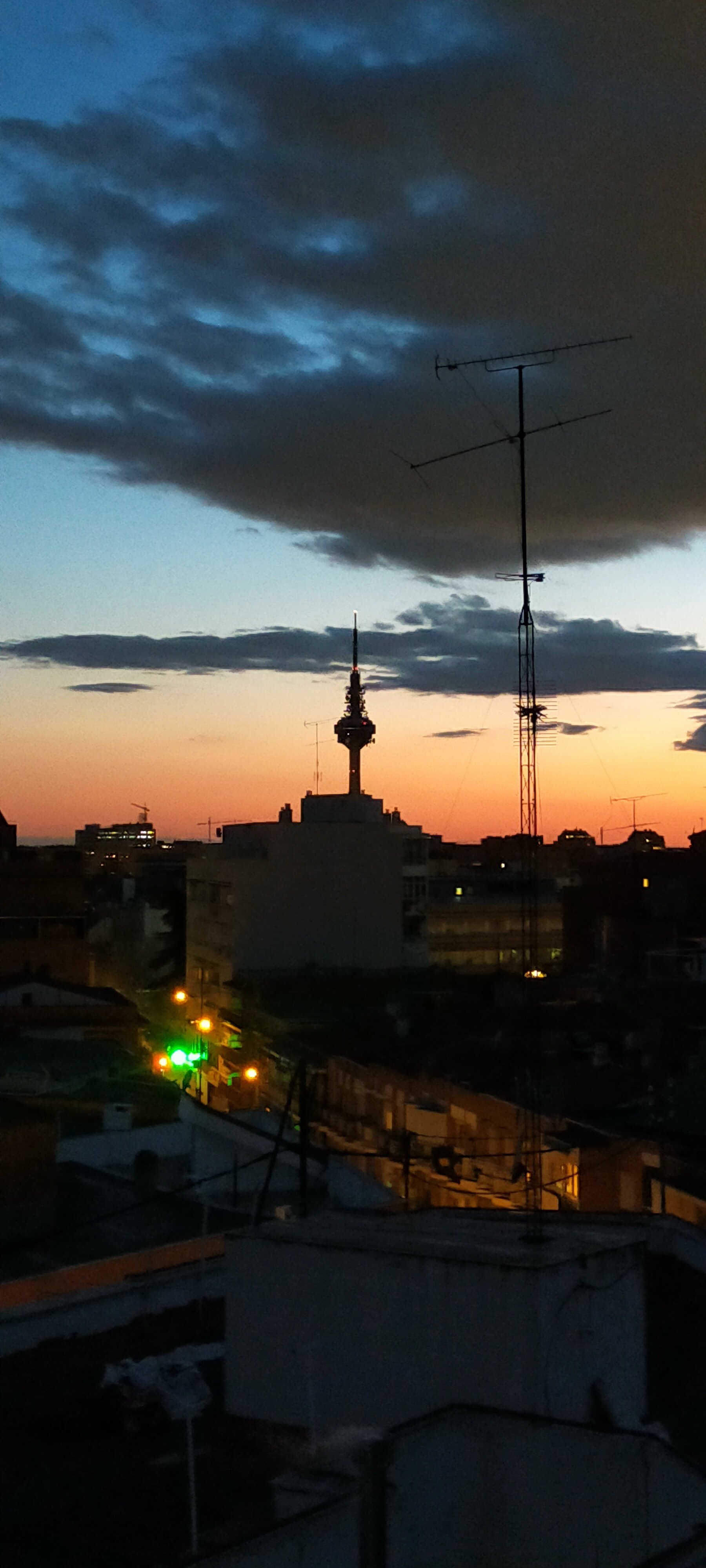- cross-posted to:
- climate@slrpnk.net
- cross-posted to:
- climate@slrpnk.net
Not mentioned in the article is that these systems are still illegal in the US.
Not everything in the world should be revolving around your stupid default country
This article is from the New York Times, a prominent US newspaper which writes primarily for a US audience. It’s relevant for them to bring it up.
As a person from Default Country, I love this statement and I want it on a shirt.
I hate this stupid country as much as the next guy, but I still want to know if there’s anything I’m allowed to do that might be good for the planet. Now I know I’m not allowed to do this because my stupid fucking country doesn’t allow it, which is usable information.
do you know why they’re illegal? is there some danger to them?
FTA:
The so-called plug-in systems involve routing the direct current generated by the panels to an inverter, which converts it to an alternating current. They can then be plugged into a conventional wall socket to feed power to a home.
So, yeah, almost certainly illegal in pretty much any grid-powered home in the US.
The basic problem is that if the grid power goes down the inverter can back-feed the grid enough to electrocute the people who are working to fix it.
Utilities require an approved isolation system of some kind that prevents that happening. They are pretty strict about this for various other technical and political reasons too, but evidently it is mostly a safety concern.
I’ve got some good locations at home for panels, and about 500W in panels that I use for camping, but the equipment I’d need to handle easily and safely consuming the power at home is kind of expensive (just running an inverter and a battery for an isolated system is easy enough, I’ve got all that, but it’s not cheap to seamlessly connect it to my home power system). Would love to have a safe and approved system like what is described in the article.
Houses in Europe are connected to the grid too.
These systems are approved in Europe by utilities because they have failsafes implemented to prevent back feeding electricity in the grid.
The fact that these systems are still illegal in the US is a political issue, not a technical one.
[European utilities] have failsafes implemented to prevent back feeding electricity in the grid
Yeah but imagine if you could save money by not doing that? What are the odds that there’s going to be cheap(er) personal mass power generation in the next few decades.
While it seems like they’d have to, the article makes no mention of such a fail safe. What does it do and how could it work?
These systems are approved in Europe by utilities because they have failsafes implemented to prevent back feeding electricity in the grid.
Sounds like Big Government Regulation of my God Damned Rights to do something on my house as I see fit! Europe’s full o’ damn communists and their stupid sun grabbin’ electro-gibbits. That’s why they’ll never be the Greatest Bestest Country on da face a dis here Earf.
From what it sounds like, the safety is in the device not the grid. In case you haven’t noticed, there is a far lesser sense of personal responsibility to those around you in the US than Europe and I don’t know that I’d trust that nobody over here would fudge some bypass to power their house in an outage
Balcony solars are not able to back feed since they need the grid to synchronize, if you want one that is able to work in “island mode” you still need approval from the grid provider/one that isnt connected with the schuko connector.
Individuals owning their own means of energy production is obviously unamerican.
It’s a feature of capitalism!
They are VERY DANGEROUS to conservatives and the flawed ideological rafts they’re still clinging to.
Are they Chinese solar panels or good ol’ American products?
They’re from the Evil Bad Country That Does the Genocides. So… uh… idk.
Because fuck us apparently.
No, because you can kill a lineman working on the downed line, who mistakenly thinks the line is dead and has no idea that you’re feeding power into it from your solar panel.
The inverters are built with an automatic shut off during grid outages, specifically for lineman safety.
I really feel like one of these store-bought solar panels wouldn’t put out enough electricity to kill someone
They have enough energy, but they automatically turn off once the grid goes down because they need the grid to synchronize. Balcony solar panels are not able to work in “island mode”, so no lineman is at risk.
You really don’t need a lot of power to kill someone, especially with AC you really don’t need much to induce ventricular fibrillation.
A 120W panel at full sunlight easily has enough power to kill someone. That’s 1A at 120V, minus some conversion losses. 120W is pretty low end these days.
Those inverters can’t backfeed, they need a grid to synchronise to.
Largely illegal by way of import. The Americans don’t want cheap foreign panels dominating their still-nascent domestic solar industry.
Removed by mod
Removed, civility.
These plugin systems are quite interesting, they allow renters for example to get some benefits of Solar without having to make permanent installs. The systems a lot cheaper than a full setup but obviously don’t produce the same amount of power. I first saw them appearing in France and then since Germany changed the law to allow them its good to see it flourishing there too. This isn’t going to save the planet but its a little step of improvement.
400 Euro isn’t bad for all the fittings and inverter and the big benefit of these DIY systems is you just put them together and connect them to a standard wall socket. Constantly just saves you money on your bills when there is sunshine. Its also not enough power that its worth dealing with export tariffs but in countries where smart meters already exist it could be part of the mix.
You just plug them into an outlet? Is there no safety concern about backfeeding power, especially if someone turns off the breaker and expects a circuit to be de-energized?
They’re not supposed to be grid-forming and should turn off if there’s no grid voltage. And if you turn off a breaker you should always check that there’s no voltage, you might’ve turned off the wrong breaker.
That’s good then. Although I hope they also considered what happens if there’s two of them on a circuit, because if the mains power goes off, but there’s another panel on the same circuit, they’d each see the other’s voltage on the line, right?
And yeah, you should verify that a circuit is de-energized after you flip the breaker, but I’ve seen both some real weird electrical work, and some electricians who aren’t that careful.
They generate no frequency so the situation you fear is not possible.
The panels themselves are DC, but there’s an inverter feeding 120V 60Hz (or whatever) into the wall, right?
Yes, but it’s a system that is designed to sync with the frequency of whatever other electricity is out there, and it shuts of if the main shuts off. Almost all rooftop systems without a battery in the US are set up the same way.
Still, it’s important to check that things you think are disconnected do not have current flowing through them. And this makes it more important.
Pure sine wave or modified? Modified (square wave) are not good for electronics, particularly computers.
deleted by creator
Although I hope they also considered what happens if there’s two of them on a circuit
The regulations allow only for one. If you want a bigger install than that you need individual approval I think.
Yeah that would worry me, plugging a power source into a wall socket.
I would much rather build an independent little cart with panels and a battery and a charge controller and an inverter and use it the way you would a generator. I would rather pay the power company full price to run my refrigerator and nothing at all to recharge my lawnmower than 98.3% for both.
How does that work with the fuse box? Like mine has a 100A fuse for the whole house, but a bunch of smaller fuses for e.g. downstairs, upstairs, lights, etc. Does it only work on the circuit it’s connected to or what?
It can power across the circuits its all technically the same electrical connection within a house. These systems are relatively small due to the constraints of a typical standard plug and the amps it can support so they tend to be limited to less than half of the total power on a loop.
I put a small flexible light weight one up last year. Secured with steel washcloth line (it doesn’t have glass or anything, just a plastic sheet with cells on it), the city replaced the meter to account for feeding in (not needed, I work home office and use up all of it in my apartment) cost me 600 or so last year, plugs into regular wall socket and has already lowered consumption by about 1/10th which is a solid chunk of money with current prices. I am very happy I get to do something as a renter, even if it will take years to pay for itself.
Anyone know if anything like this is allowed in the UK?
New York Times Media Bias Fact Check Credibility: [High] (Click to view Full Report)
New York Times is rated with High Creditability by Media Bias Fact Check.
Bias: Left-Center
Factual Reporting: High
Country: United States of America
Full Report: https://mediabiasfactcheck.com/new-york-times/Check the bias and credibility of this article on Ground.News:
- https://ground.news/find?url=https%3A%2F%2Fwww.nytimes.com%2F2024%2F07%2F29%2Fbusiness%2Fgermany-solar-panels-climate-change.html%3Funlocked_article_code%3D1.-00.0349.cWTL1gUdvaMj%26smid%3Dem-share
Media Bias Fact Check is a fact-checking website that rates the bias and credibility of news sources. They are known for their comprehensive and detailed reports.
Thanks to Media Bias Fact Check for their access to the API.
Please consider supporting them by donating.Beep boop. This action was performed automatically. If you dont like me then please block me.💔
If you have any questions or comments about me, you can make a post to LW Support lemmy community.I don’t hate this bot.
But I don’t love it. Maybe it’s just too much info? Or formatting? I don’t know.
Yeah, looks like the bot needs a little attention from the devs
deleted by creator
My dude did you even read the article?
299€ for a complete 840 Wp setup at Lidl the other day.
Wtf? Read the article. It’s about 400 Euro full set ups
Bro the article headline even says balcony railings. We’re talking single solar panel + plug in micro inverter type setups. That’s like $200 if you shop around.
And not sure if you’re aware, but after the “usable age” the system produces at like 80% capacity, so unless you disconnected from the grid and really really need that last 20%, you don’t need to change a thing and can keep using it way past the warranty period. Or you can add a couple extra panels. Why replace the whole thing lol.
You can get a 800Wp (max allowed Wp for a balcony solar) kit in austria for around 500€, germany is currently limited to 600Wp so it should be about the same price or cheaper. And you just need to plug them into a schuko outlet, so most people should be able to do it themselve.
Edit: Fixed units
I felt a great disturbance in the Force, as if thousands of physics teachers suddenly cringed and started yelling “Get your units right!”.
spoiler
Wh is a unit of energy (1 Wh = 3.6 kJ) and by nature cumulative. And cumulative units can’t peak, so Whp [sic] is impossible as a unit. What you really meant is Wp, as W is a unit of power (1 W = 1 J/s), which is a momentary value and momentary values can peak.
Luckily I’m not in school anymore xD
But thx for correcting me, edited my post, should be correct now :)
I’m sure the original comment had incorrect units as used, but this explanation that cumulative units “can’t peak” seems wrong.
If you consider the total stored energy (Wh) over time of a solar-battery system under load, there certainly will be peaks or, in other words, maximal excess capacity of the system.
So no, it’s not impossible to define a unit of Whp as such. “Cumulative” and “momentary” values are not exclusive and also do not have any bearing on whether a function of such values has maxima and minima.
New VDE recommendations say 800W on Schuko is tolerated. Wieland is of course better. That’s btw not solar panel capacity but inverter capacity, you can have 2kW on your balcony as long as you’re not feeding more than 800W into the net you don’t need any permits no need to contact your utility no nothing.
What you should pay attention to as a renter without already existing balcony outlet though is your landlord: They generally don’t like it when you drill holes through exterior walls, window frames, whatnot. Use window feed-through cables (for the PV connections, not the 220V), or dish out (quite a bit) of money to have it done properly (after talking to the landlord). At which point yes you want a Wieland outlet they’re maybe 20 bucks, what’s going to cost money is the electrician.
If you have an outside light on your balcony, you can probably feed it through there, though I’m not quite sure how power coming from inside the circuit interacts with the internal circuit breakers - lights sockets are usually not in the same internal subnetwork as wall sockets and this method would be feeding the power into the first circuit which is usually were all your lamps are, not into the second which is usally were all your appliances are, and it’s quite possible that the circuit breakers for the lamps’ circuit triggers with less current than the one for circuits meant to drive things with much higher power draw like vacuum cleaners, ovens and washing machines.
Lighting fixtures in adjacent rooms are supposed to be on different breakers, not sure whether that also applies to balconies, not a room as such is it… but I’m no electrician. While I did get an A in electrotechnics I don’t know the VDE norms by heart (nor would I touch the wiring in a breaker panel).
OTOH it’s perfectly permissible to have outlets and lighting on the same breaker. That’s all to say I wouldn’t be surprised or shocked to find that a balcony light is on a general “living room” circuit.
I don’t think it matters in practice which phase the inverter is on. If you run the meter backwards with one phase and forwards with another, it should be still. We’re not talking about an autonomous installation, after all, when the external network is down and there’s no frequency to sync to those inverters stop outputting.
Which all makes me wonder: Why aren’t we mandating that all new installations come with network isolation and points where you can plug in panels, battery etc? The hardware isn’t that expensive and installing it is practically free when you’re doing the initial installation.
Modern meters take that into account (and you’ll get one by the energy provider if you don’t have it already when you tell them you installed such solar panels), everything that’s used in your home gets balanced against what you produce, regardless of which specific circuit uses / provides energy. (Only immediate usage though, and if you add a battery that can save your excess energy instead of feeding it back into the grid you roughly quadruple the cost so that’s quite a bit more expensive.)
I’m not thinking the main circuit breaker or the meter.
Were I live appartments have a whole board of smaller circuit breakers once for a different circuits inside the appartment - for example there might be a circuit just for illumination, another for kitchen wall plugs, a different for bedroom wall plugs and so on, and for each of these there will be one such small circuit breaker.
These small circuit breakers normally have a lower trigger point than the main circuit breaker, though they might be different depending on the circuit since different kinds of things draw different amounts of power - i.e. household lamps aren’t going to be drawing 1000W whilst an electric oven or electric heater might very draw that or more power.
In a normal situation, the current comes from the outside, through the meter and the main circuit breaker and then gets divided based on demand and goes through each smaller circuit breaker and feeds whatever is drawing power in those circuits.
If you have a balcony plug-in solar power system there, wired to any circuit, IF the power does come OUT from that circuit (I’m not sure, though it makes sense it can) and into the other circuits, then wouldn’t the trigger point of the circuit breaker for that circuit (which as I said is lower than the main circuit breaker’s) be important?
If I remember it correctly circuit breakers are electromechanic and don’t really care which direction the current is going (so OUT or IN is all the same) just how much of it is passing through, so the current going OUT instead of IN on one of those circuit breakers would be fine, but even that being the case, it might still be a problem to wire the solar power via the circuit for the illumination rather than the circuit for the wall socked because the circuit breaker for the illumination circuit might have a lower trigger point than that for the wall sockets circuit (because you might connect a 1000W device to a wall socket whilst a 1000W lamp was already insanelly powerful back in the Filament Lamp days and is much more so in the LED Lamp days).
PS: Your point about “will power come out of my household and how does that interact with the meter and the main circuit breaker” is also important, but I wasn’t even thinking about that since I was thinking about just the difference between wiring the power out from an appartment balcony via the circuit for the outside lighting vs bringing that power inside the dwelling and connecting it to a wall socket and hence a different circuit.
I only know 16 amp breakers (~3600 W), not sure if lower current circuits are commonly used in Germany. In my experience every socket can power devices like a toaster or lawn mower, so they’re all suitable for such solar inverters.
My dude did you even read the article?
In Germany, individual plug-in panels sell for as low as 200 euros, or about $217, at big box stores. Complete sets, including mountings, an inverter and cables, are about twice that cost.













